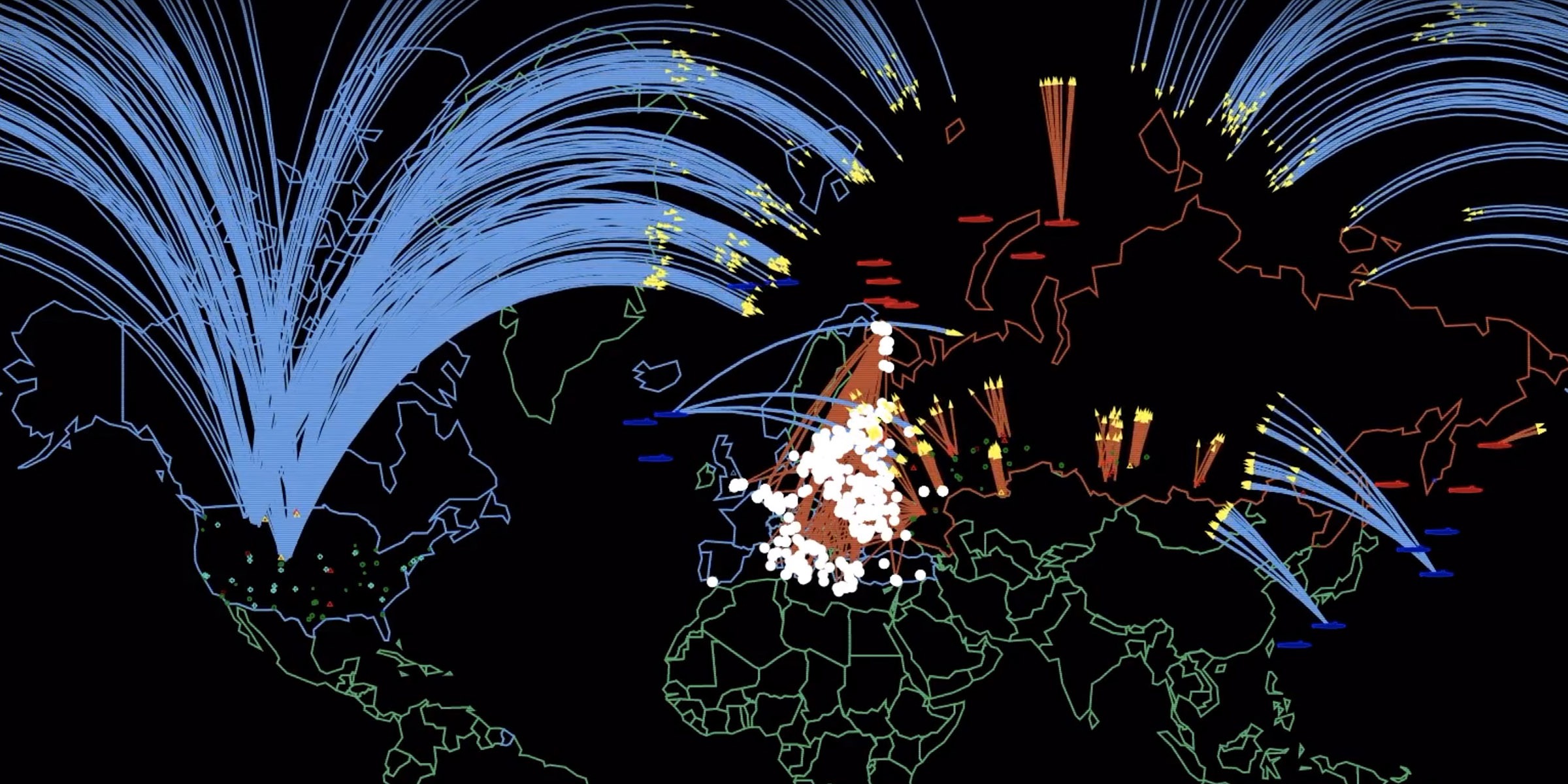- A new simulation called “Plan A,” by researchers at Princeton’s Program on Science and Global Security, shows how the use of one so-called tactical or low-yield nuclear weapon could lead to a terrifying worldwide conflict.
- In the roughly four-minute video, a Russian “nuclear warning shot” at a US-NATO coalition leads to a global nuclear war that leads to 91.5 million deaths and injuries.
- Under President Trump, the US is ramping up production of tactical nuclear weapons, ostensibly to target troops and munitions supplies. While advocates say these weapons would keep wars from escalating, the simulation finds the opposite outcome.
- The dissolution of the INF treaty in August raised the stakes for nuclear war, as both the US and Russia were free to develop weapons previously banned under the treaty.
- “The risk of nuclear war has increased dramatically in the past two years,” the project states. Nuclear strikes are an extremely remote possibility, but their chances are rising experts warn.
- Visit Business Insider’s home page for more stories.
More than 91 million people in Russia, the US, and NATO-allied countries might be killed or injured within three hours following a single “nuclear warning shot,” according to a terrifying new simulation.
The simulation is called “Plan A,” and it’s an audio-visual piece that was first posted to to YouTube on September 6. (You can watch the full video at the end of this story.) Researchers at the Science and Global Security lab at Princeton University created the animation, which shows how a battle between Russia and NATO allies that uses so-called low-yield or “tactical” nuclear weapons – which can pack a blast equivalent to those the US used to destroy Hiroshima or Nagasaki in World War II – might feasibly and quickly snowball into a global nuclear war.
“This project is motivated by the need to highlight the potentially catastrophic consequences of current US and Russian nuclear war plans. The risk of nuclear war has increased dramatically in the past two years,” the project states on its website.
The video has an ominous, droning soundtrack and a digital map design straight out of the 1983 movie “WarGames.” The Cold War-era movie, in which a young Matthew Broderick accidentally triggers a nuclear war, “was exactly the reference point,” simulation designer Alex Wellerstein told Insider.
But while simulations can be frightening, they can also be incredibly helpful: governments can use them to develop contingency plans to respond to nuclear disasters and attacks in the least escalatory way, and they can also help ordinary citizens learn how to survive a nuclear attack.
"Plan A" comes as tensions between Russia and NATO allies ratchet up. Both Russia and the US are testing weapons previously banned under the Intermediate-range Nuclear Forces treaty, often called INF. Russian bombers have also cruised into US airspace repeatedly, and the US recently sent its B-2 Spirit stealth bomber on a mission in the Arctic - right in Russia's backyard.
This is how a NATO-Russian confrontation could quickly escalate into nuclear war.
The simulation starts with a conventional war between NATO and Russian troops.
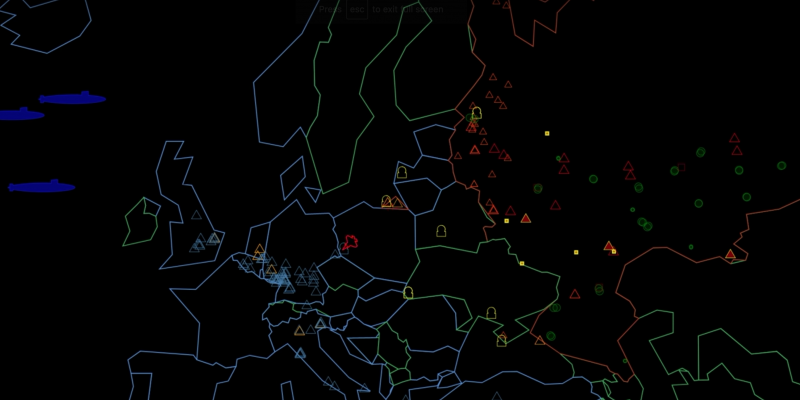
Conventional warfare - namely all conflict short of nuclear, chemical or biological weapons - escalates into nuclear warfare when Russia launches a nuclear "warning shot" from a base near Kaliningrad to stop NATO advancement. Russia doesn't have a "no first use" policy - it dropped it in 1993. NATO forces respond by launching a tactical nuclear strike.
The US already has tactical nuclear weapons, such as B61-12 gravity bombs, and more planned under US President Donald Trump's 2018 Nuclear Posture Review. Included in the plan is a low-yield warhead intended for use in a submarine-launched ballistic missile, as well as a sea-launched cruise missile.
These kinds of weapons are designed for targets on the battlefield, like troops or munitions supplies, as opposed to long- or intermediate-range nuclear missiles that are fired from one country to another, for example, targeting an enemy's bombers and ICBM silos - or even cities.
Tactical nuclear strikes up the ante.
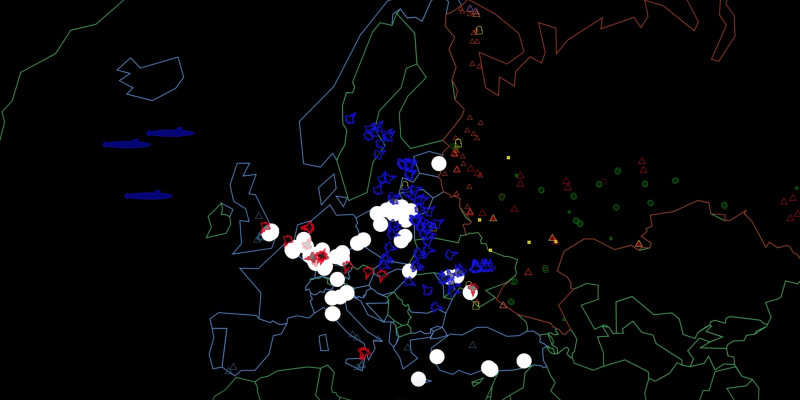
If the nuclear threshold is crossed, the simulation finds, then both the US and Russia would respond with tactical nuclear weapons. Russia would send 300 warheads to NATO targets, including advancing troops, in both aircraft and short-range missiles - overwhelming force that would obliterate tanks, fortified positions and soldiers unlike anything ever seen in battle before. Supporting forces and civilians not immediately killed would be susceptible to painful and even fatal radiation exposure.
NATO would respond by sending about 180 tactical nuclear weapons to Russia via aircraft in equally devastating retaliation.
The simulation was constructed using independent analysis of nuclear force postures in NATO countries and Russia, including the availability of nuclear weapons, their yields, and possible targets, according to the Science and Global Security lab.
The tactical phase of the simulation shows about 2.6 million casualties over three hours.
Instead of the tactical weapons de-escalating the conflict, as proponents claim they would, the simulation shows conflict spiraling out of control after the use of tactical weapons.
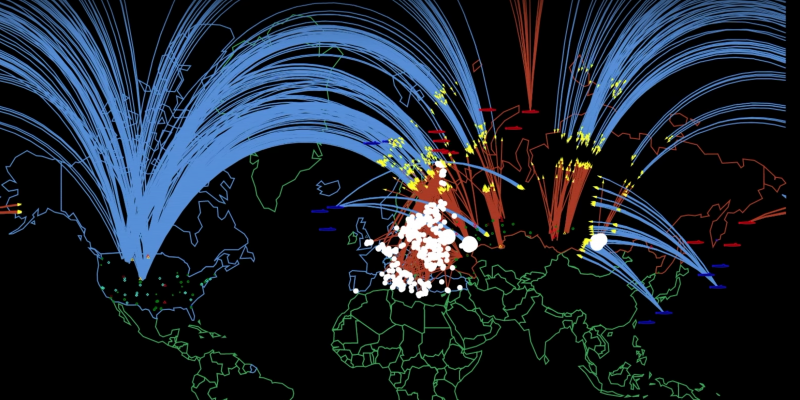
Russia's tactical weapons would destroy much of Europe, the simulation posits. In response, NATO would launch submarine- and US-based strategic nuclear weapons toward Russia's nuclear arsenals - 600 warheads in total.
Strategic nuclear weapons have a longer range, so Russia, knowing that NATO nukes are headed for its weapons cache, would throw all its weight behind missiles launched from silos, mobile launchers, and submarines.
The casualties during this phase would be 3.4 million in 45 minutes.
This leads to 85.3 million additional casualties in the final phase of the nuclear war simulation.
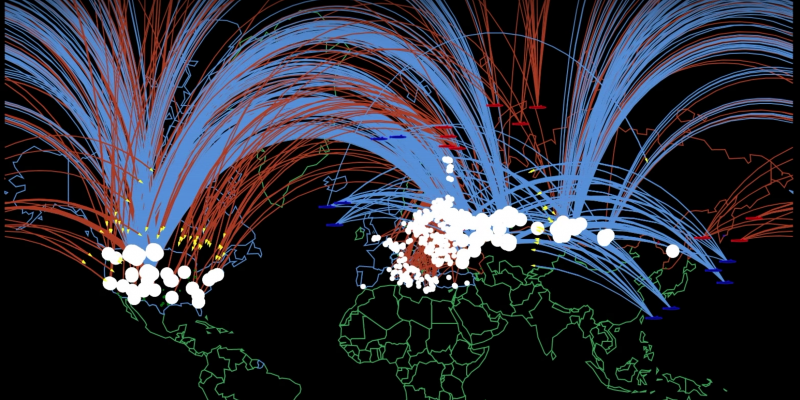
In the wake of previous attacks, both Russia and NATO would launch warheads toward each other's 30 most populous cities in the final stage of of the scenario, using five to 10 warheads for each city depending on its size.
This phase would cause 85.3 million casualties - both deaths and injuries. But the total casualty count from the entire battle (of less than 5 hours) would be 34.1 million deaths and 57.4 million injuries, or a combined 91.3 million casualties overall.
But that's just the immediate conflict: The entire world would be affected by nuclear disaster in the months, years, and decades to come.
The radioactive fallout from the nuclear disaster would cause additional deaths and injuries. Studies also suggest that, even with a limited nuclear engagement, Earth's atmosphere would cool dramatically, driving famine, refugee crises, additional conflicts, and more deaths.
